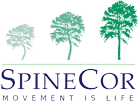Pediatric treatment
The SpineCor® dynamic brace has been proven effective in treating adolescent idiopathic scoliosis and it is now also being used to treat hyperkyphosis in patients whose growth and development are not yet complete.
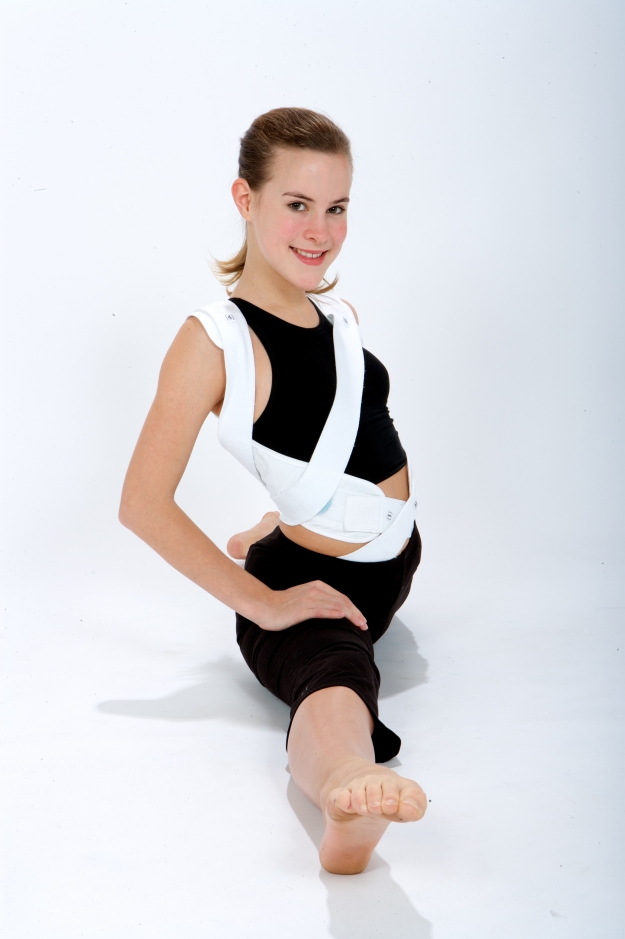 |
Be it in the treatment of scoliosis or hyperkyphosis, pediatric patients are the ones who stand to gain the most from the corrective action of the SpineCor® brace (38). There are two key reasons for the SpineCor® treatment’s success: the first being the brace’s corrective potential as it relates to the patient’s continued growth and development up until around age 15/Risser 4 (see table below for information about the Risser sign). Unlike adults who have completed their development, pediatric patients’ bone structure is still malleable. The second reason behind the treatment’s success is that the brace exerts constant dynamic action on the pediatric patient’s neuromuscular system, favouring integration of the Corrective Movement® on a neurological level. These two factors combined result in stable correction of the condition, even after bracing is discontinued (3), something previously unheard of in orthopaedics. The best results are obtained in the case of rapid interventions (age ≤ 12–13 years) and of moderate curves (Cobb angle less than 50°). It has been proven that in most cases SpineCor® may still be able to correct or stabilize spinal deformities in patients diagnosed after menstruation for young girls or voice change for young boys and can be used to treat them up until the end of their developmental period. |
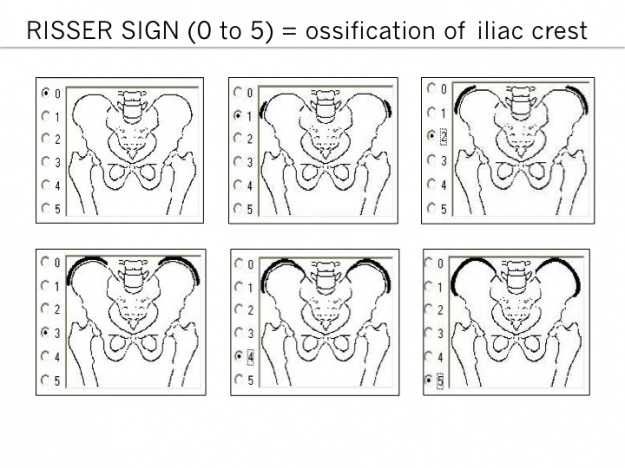 |
|
The dark lines illustrate the progression of ossification of the iliac crest (54). The numbers 0 to 5 are indicative of skeletal maturity. 0 = no ossification; 1 = ossification up to 25%; 2 = ossification from 26 to 50%; 3 = ossification from 51 to 75%; 4 = ossification from 75 to 100%; and 5 = complete ossification. (43). |
For more information about the importance of early diagnosis, visit the PEDIATRIC SCOLIOSIS page.
Corrective Movement®: reinforcement and stability
The tension in the elastic bands of the SpineCor® brace reproduces a curve-specific Corrective Movement ®, untwisting the spine by dynamically opening the abnormal curve through alternative compression and tension on growth plates. This normalizes postural disorganization by globally and dynamically over-correcting the posture. The previous abnormal posture is overwritten as the new movement strategy is integrated into the brain, resulting in neuromuscular re-education. The SpineCor® brace is the only brace for which the resultant new posture and Cobb angles are maintained post bracing with no loss of correction over time. (3)
Studies comparing the effectiveness of different braces
RESULTS FOR ADOLESCENTS |
|||
Type of brace/Effect on scoliosis |
TLSO* |
Providence* |
SpineCor** |
|
Correction/Stabilization |
15% |
31% |
59% |
|
More than 45° progression |
85% |
69% |
41% |
|
More than 6° progression |
56% |
45% |
1% |
|
Progression necessitating surgery |
79% |
60% |
23% |
|
Therapeutic success in nearly 89% of all cases Success = improvement or stabilization of the curve (progression less than 5°) Using the Scoliosis Research Society (SRS)’s new criteria for high-risk groups = 59% therapeutic success High-risk = Cobb angle 25°–40° and/or Risser 0–3 or before start of menstruation * (40) ** (3) |
|||
Adolescent idiopathic scoliosis treatment – Case study
This case study follows the treatment of an adolescent female patient with idiopathic scoliosis whose initial presentation at 9.5 years and Risser 0 was with a 36º right thoracic curve. Duration of treatment: 15 months.
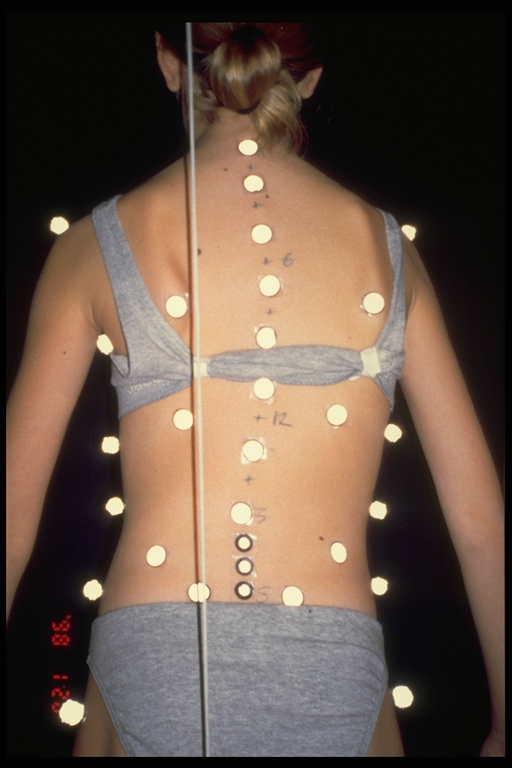 |
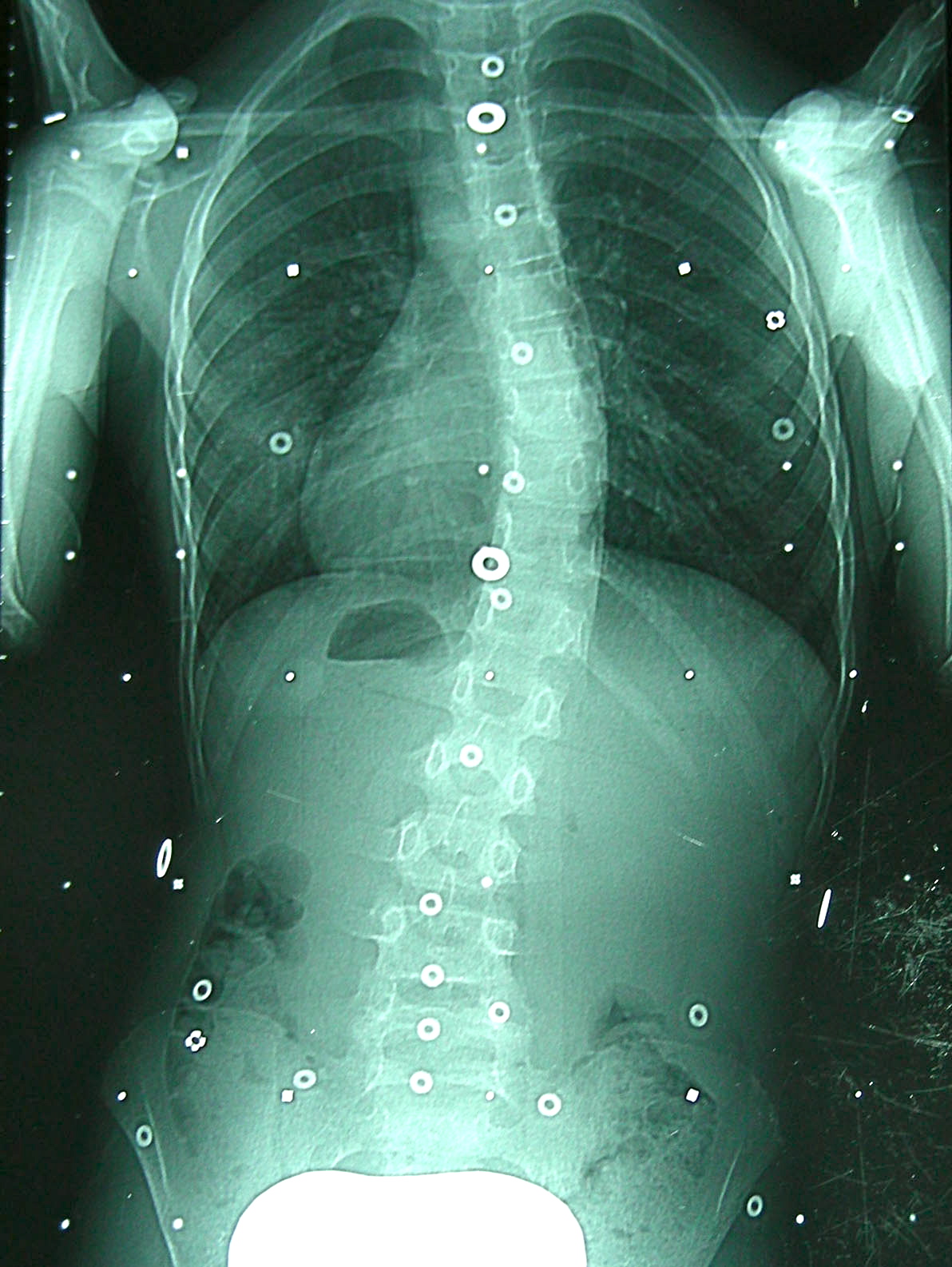 |
|
Patient - 9 ½ years old - 36º |
Patient - 9 ½ years old - 36º |
After evaluation of the patient's radiological. clinical and postural data, she was classified as a Right Thoracic Type 1 according to the SpineCor classification.
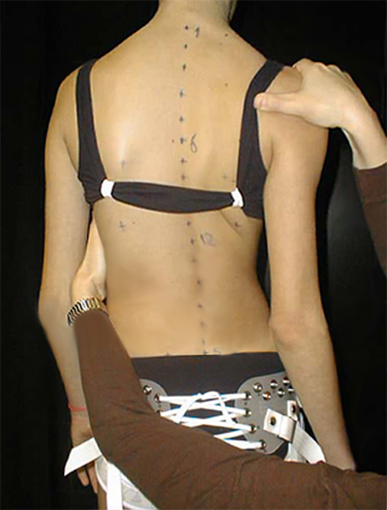 |
 |
|
Corrective movement |
Wearing SpineCor Brace |
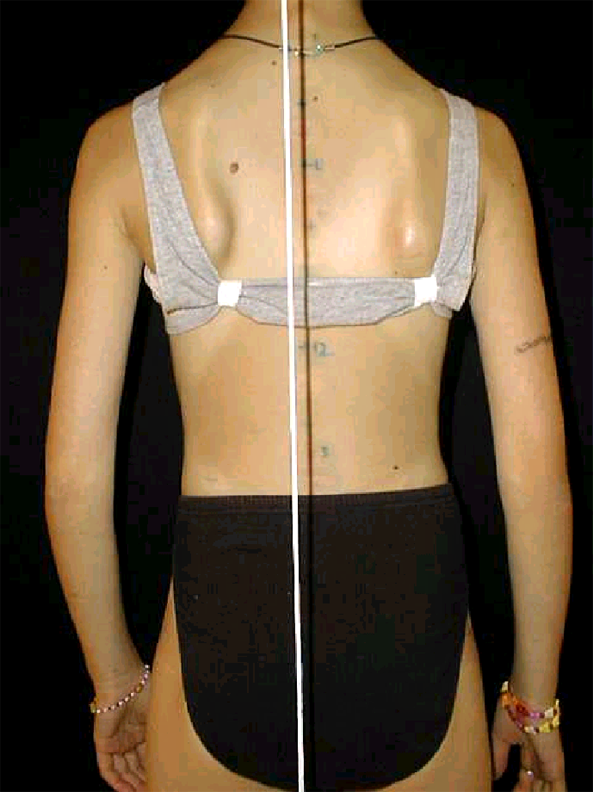 |
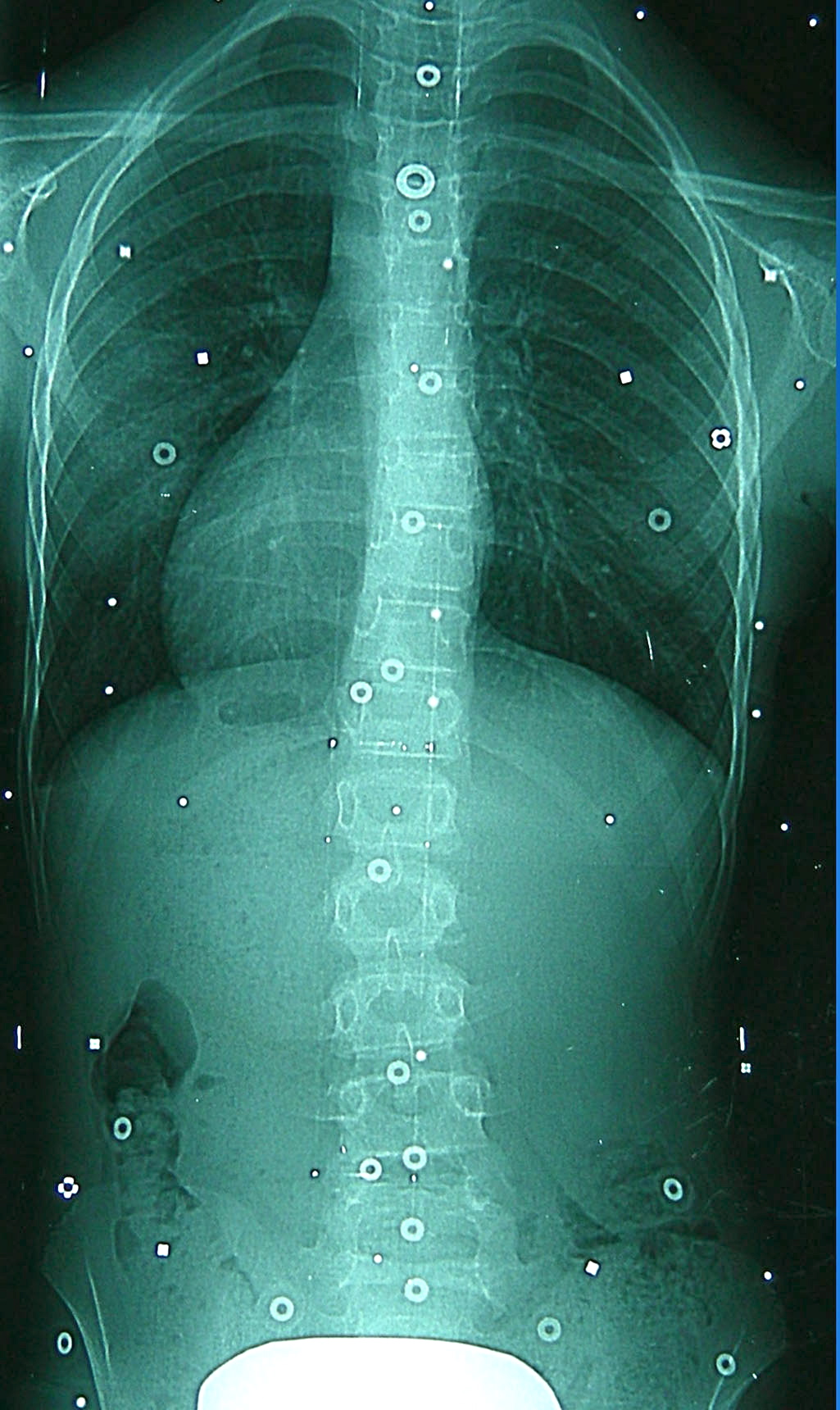 |
|
Clinical aspect after treatment |
15 Months of Brace Treatment - |
Patient's postural correction and Cobb angle reduction have been maintained three years post bracing.
Download The SpineCor Dynamic Corrective Brace brochure for juvenile and adolescent scoliosis.
Treatment of hyperkyphosis
Although the SpineCor® brace was developed for patients suffering from adolescent idiopathic scoliosis (AIS), since it can be arranged in countless different ways it has also proven effective in the treatment of other spinal deformities, notably, hyperkyphosis. We have elaborated various setup methods to create curve-specific Corrective Movements® for each type of kyphosis outlined in our morphological classification of the disease. As with scoliosis, the brace’s corrective potential as it relates to the pediatric patient’s continued growth and development and its dynamic action on their neuromuscular system results in stable correction of the condition.
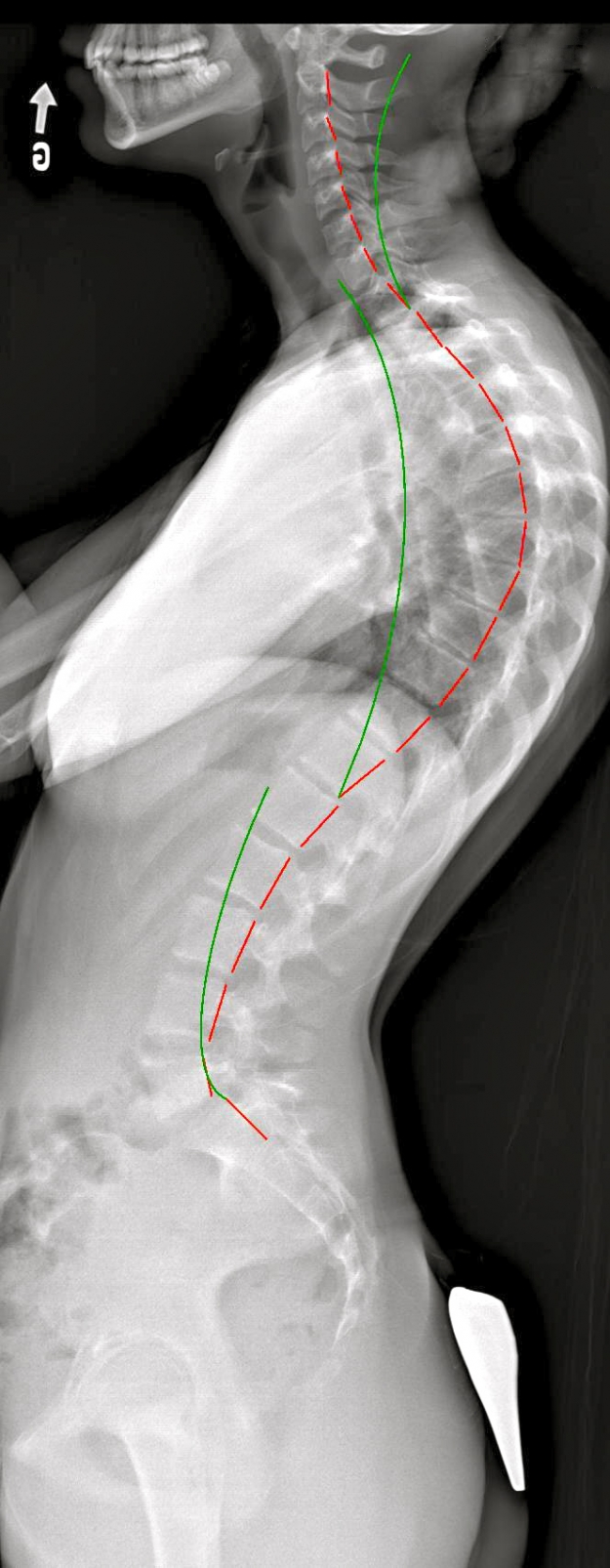 |
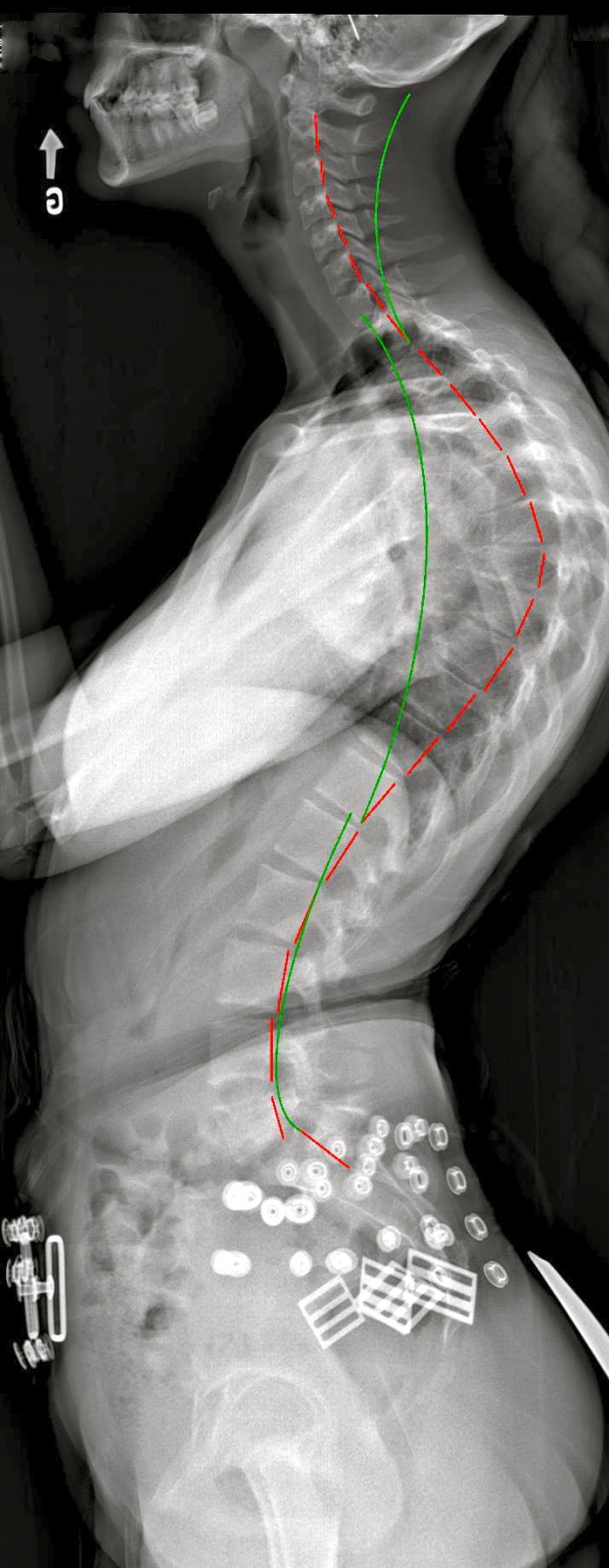 |
|
Hyperkyphosis without brace |
Hyperkyphosis with brace |
Profile X-rays of an adolescent patient with hyperkyphosis. The green line represents the ideal spinal curve and the red line follows the patient's spine. In the second X-ray, where the patient is wearing the SpineCor® brace, a significant reduction of the abnormal curve can be observed in the thoracic region, associated with a dramatic improvement of the lumbar curve.
Treatment of ligament instability
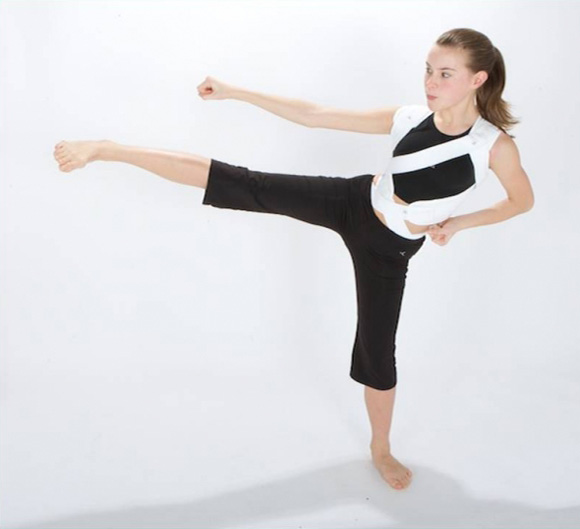 |
Spondylolisthesis (aka anterolisthesis) and lateral listhesis are two other examples of spinal deformities which can be treated using the SpineCor® brace to stabilize the spinal curve. Treatment for vertebral instability using the The SpineCor® brace is based on the same principle as treatment for other spinal deformities. By reinforcing spine-supporting structures and improving postural balance, the Corrective Movement® produced by the elastic bands reduces the pressure on the spinal joints and muscle imbalance, two factors often responsible for back pain. |
